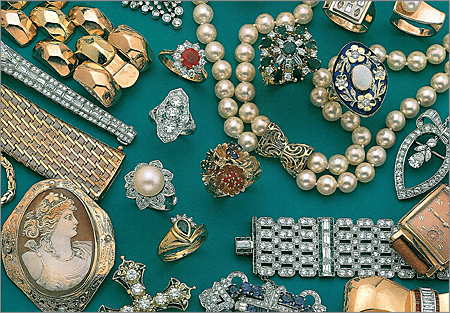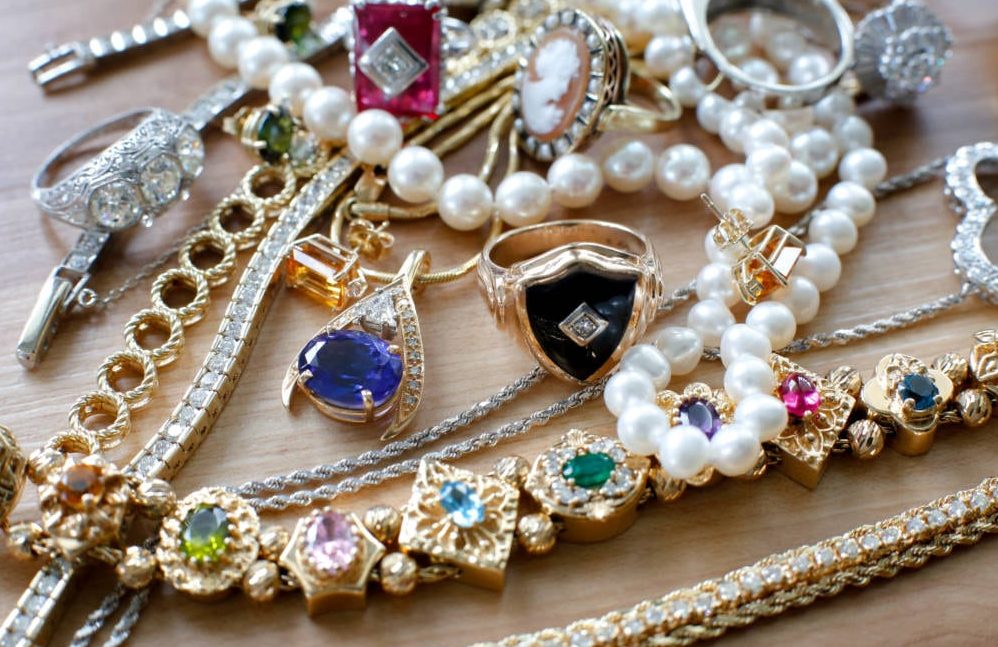Estate Jewelry: A Guide to Understanding and Appreciating Antique Jewelry Pieces
Reveal the Rich Background Behind Stunning Estate Fashion Jewelry Collections
The exploration of estate precious jewelry collections uses an unique home window right into background, exposing the intricate connection between craftsmanship and social development. What secrets might these collections still hold?
The Beginnings of Estate Fashion Jewelry
Just how did estate precious jewelry concerned embody the rich history and virtuosity of past eras? The beginnings of estate precious jewelry can be traced back to different periods of craftsmanship, where fashion jewelry was not simply an accessory however a representation of social worths, technological developments, and creative expressions. Each piece narrates, usually connected with the lives of their previous owners, encapsulating individual stories along with historical contexts.
The term "estate jewelry" generally describes secondhand items, typically from significant ages such as Victorian, Art Nouveau, or Art Deco. These items were developed with precise attention to information, showcasing the skill of craftsmens that utilized materials like gold, silver, and precious gemstones. Unlike contemporary jewelry, estate pieces frequently include special styles that highlight the looks of their time, hence acting as tangible links to the past.

Notable Layout Ages
Throughout history, several significant style ages have considerably affected the evolution of estate precious jewelry, each defined by unique designs, materials, and cultural contexts. The Georgian era (1714-1837) noted the beginning of intricate designs, typically featuring nature-inspired concepts and the use of products like gold, silver, and gems embeded in sophisticated setups. Following this, the Victorian era (1837-1901) introduced romantic styles, with sentimental jewelry and cutting-edge methods such as the usage of enamel and cameos.
The Art Nouveau duration (1890-1910) commemorated natural types and the appeal of nature, utilizing materials like opals and pearls in moving designs. This was been successful by the Art Deco age (1920-1939), which embraced geometric patterns, bold shades, and lavish products such as platinum and diamonds, reflecting the modernist spirit of the time.
The Mid-Century Modern age (1940-1960) showcased structured layouts and the use of unusual products, stressing minimalism and capability. Each of these eras not just mirrors the artistic activities of their time however also envelops the social values and technological innovations that shaped jewelry design, making them an interesting topic for collection agencies and chroniclers alike.

Famous Estate Fashion Jewelry Collections
The abundant history of estate jewelry is magnificently exemplified by several prominent collections that showcase the artistry and workmanship from various style ages. One of one of the most famous is the Cartier Collection, which shows the deluxe and development of the legendary French jewelry expert. Parts from this collection typically feature intricate layouts and splendid gems, highlighting the brand's dedication to great craftsmanship.
Another significant collection is the Duchess of Windsor's jewelry collection, which consists of several unique pieces, consisting of the renowned "Windsor" arm band. This collection not only exemplifies the style of the Art Deco period but also brings a rich narrative of love and loss, as it belonged to Wallis Simpson, who notoriously wed Edward VIII.
The collection of the late starlet Elizabeth Taylor also attracts attention in the world of estate reference fashion jewelry. With countless pieces created by prominent jewelers like Bulgari and Cartier, her collection personifies glamour and sophistication, emphasizing her individual style and fondness for distinct gems.
These renowned estate precious jewelry collections function as a testimony to the long-lasting allure of fine jewelry, supplying insight into the cultural and artistic motions that shaped their development.
The Social Significance
Estate fashion jewelry collections hold profound social importance, showing not only the aesthetic worths of their respective eras yet additionally the historical and social contexts in which they were created. Each item frequently personifies the workmanship and imaginative fads of its time, showcasing the development of design and modern technology in fashion jewelry making.
Moreover, these collections act as concrete links to social customs and routines. Wedding event bands and heirloom brooches may signify love and domestic bonds, while items adorned with details gemstones can stand for regional or social identities. The products made use of-- this whether gold, silver, or priceless rocks-- typically inform tales of trade, exploration, and the wide range build-up of cultures.
Furthermore, estate precious jewelry can operate as historic artefacts, giving understandings into the lives of people and the societal norms they navigated. The means precious jewelry was put on and valued can disclose much concerning sex duties, standing, and personal expression within varying cultural landscapes. Estate jewelry goes beyond plain embellishment, acting as a rich narrative of human experience, artistry, and cultural heritage, inviting contemporary audiences to involve with the past in a meaningful means.
Caring for Your Estate Parts
Caring for estate precious jewelry pieces needs a thoughtful method to ensure their durability and maintain their one-of-a-kind attributes. Always tidy estate precious jewelry using a soft, lint-free towel after each wear to eliminate you can try here oils and dust.
Storage space is just as vital; shop items separately in a fabric-lined box to stop tangling and scraping. Think about making use of anti-tarnish pouches or fabrics for silver things, as this helps to decrease the tarnishing process. In addition, prevent revealing precious jewelry to extreme wetness, extreme temperature levels, or direct sunlight, which can adversely affect gemstones and steels.
Consulting a jewelry expert experienced in vintage or antique pieces can supply specialized treatment options. By carrying out these techniques, collectors can preserve their estate jewelry's aesthetic and historic worth, making certain these pieces proceed to be valued for generations to come.
Conclusion
In conclusion, the expedition of estate jewelry collections reveals a tapestry of artistic expression and cultural significance, reflecting the values and visual appeals of different historic periods. Once had them, each item offers as a testament to exceptional workmanship and the narratives of those that. Comprehending the beginnings, style ages, and noteworthy collections boosts appreciation for these artefacts, stressing their role in protecting cultural heritage and encouraging ongoing stewardship and look after these impressive treasures.
The expedition of estate jewelry collections supplies an one-of-a-kind window into background, revealing the detailed relationship between craftsmanship and social evolution. The origins of estate fashion jewelry can be mapped back to different periods of craftsmanship, where precious jewelry was not simply a device yet a representation of social worths, technical advancements, and imaginative expressions.The term "estate jewelry" commonly refers to previously owned items, often from substantial eras such as Victorian, Art Nouveau, or Art Deco.The abundant history of estate precious jewelry is beautifully exhibited by numerous distinguished collections that display the artistry and workmanship from various design periods.In final thought, the exploration of estate fashion jewelry collections exposes a tapestry of creative expression and social value, reflecting the worths and visual appeals of various historical periods.